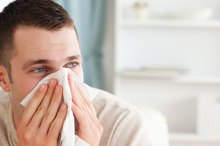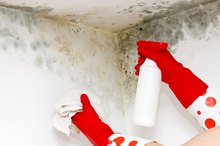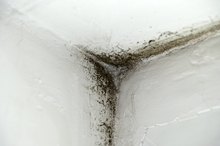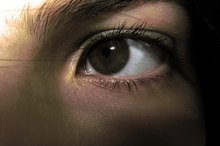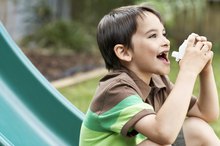What does fact checked mean?
At Healthfully, we strive to deliver objective content that is accurate and up-to-date. Our team periodically reviews articles in order to ensure content quality. The sources cited below consist of evidence from peer-reviewed journals, prominent medical organizations, academic associations, and government data.
- U.S. Centers for Disease Control and Prevention: Molds: Basic Facts
- U.S. Centers for Disease Control and Prevention: Molds: Facts about Stachybotrys chartarum and Other Molds
The information contained on this site is for informational purposes only, and should not be used as a substitute for the advice of a professional health care provider. Please check with the appropriate physician regarding health questions and concerns. Although we strive to deliver accurate and up-to-date information, no guarantee to that effect is made.
Diseases Linked to Black Mold
The University of Minnesota states that mold is belongs to the fungi family. It lives and reproduces on organic matter, with around 100 indoor mold types posing a threat to human health through released toxins. The U.S. Centers for Disease Control and Prevention list cladosporium, penicillium, alternaria, Stachybotrys and aspergillus as some of the more common indoor molds 12. They can sometimes be identified as a dark, blackish stain.
If you are experiencing serious medical symptoms, seek emergency treatment immediately.
Allergy
The CDC explains that some people have a sensitivity to molds causing nasal congestion and stuffiness, wheezing, coughing, sneezing and eye irritation. In those with a more severe allergy, shortness of breath and even fever might be experienced. Workers who are employed in areas with high concentrations of mold are more susceptible to symptoms.
Organ Toxicity
Side Effects of Mold Inhalation
Learn More
According to the University of Minnesota, prokaryotes, cells that lack a nucleus, and eukaryotes, complex cells, are the most vulnerable to the mycotoxins from penicillium, Stachybotrys and aspergillus. These molds can affect major organs, causing acute liver damage, tumors, cirrhosis of the liver, immunosuppression and respiratory infections.
Infant Pulmonary Hemorrhage
The CDC maintains there is a possible link between infant pulmonary hemorrhage and Stachybotrys; the agency recommends that proper medical attention be sought for children who have been exposed. The University of Minnesota also cites an association between a child's length of exposure and the severity of the disease. Symptoms include bleeding of the lungs and respiratory distress.
Sheet-rock, wood and ceiling tiles are ideal breeding grounds for this mold. High humidity levels and fluctuating temperatures also help create a mold-friendly environment.
- The CDC maintains there is a possible link between infant pulmonary hemorrhage and Stachybotrys; the agency recommends that proper medical attention be sought for children who have been exposed.
Related Articles
References
Writer Bio
Carrie Cross has been writing for profit and pleasure for more than 35 years. Her background includes business, real estate, entrepreneurship, management, health and nutrition. A registered nurse, she has published various pieces, including web content, numerous newspaper and magazine articles and columns and six books.

